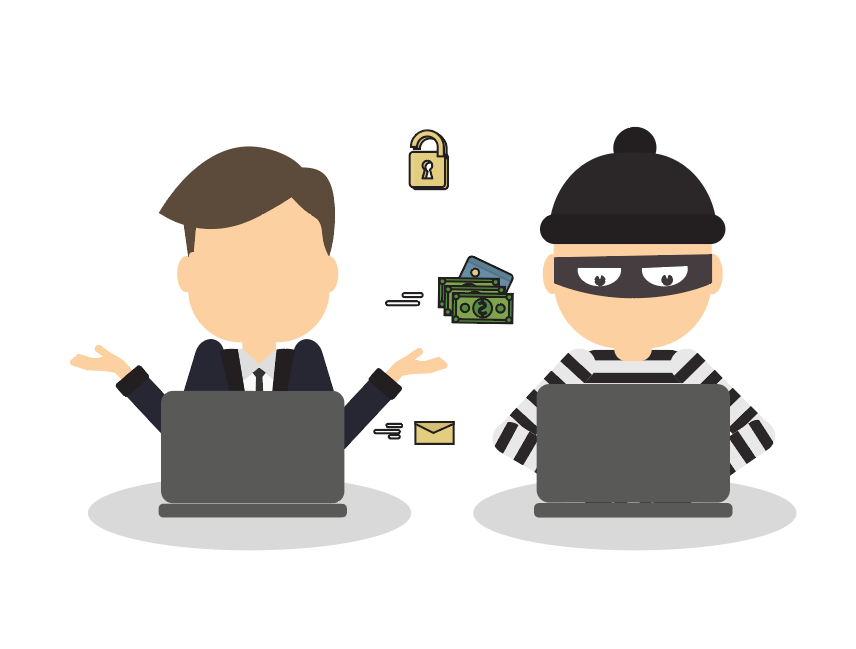Preventing click fraud in your affiliate traffic can be tricky. Yet, it can be done. In this article, we are going to discuss what is “click fraud,” how much it can cost you if you don’t pay attention, and ultimately – how to prevent it.
What is click fraud?
Click fraud is when a visitor or a bot pretends to be a legitimate visitor on a webpage. He then clicks on an ad, a button, or some other type of hyperlink. Click fraud aims to trick a platform or service into thinking that real users are interacting with a website, ad, or app.
If you’ve promoted an affiliate campaign with paid traffic, there is a big chance you’ve encountered a problem with your traffic quality.
Have you ever heard about click fraud before?
Ad fraud to cost advertisers $19B in 2018, representing 9% of total digital advertising spend. A new report from Juniper Research has found that advertisers will lose an estimated $19 billion to fraudulent activities next year, equivalent to $51 million per day. This figure, representing advertising on online and mobile devices, will continue to rise, reaching $44 billion by 2022.
Sam Smith, juniperresearch.com
Typically, bot traffic affects desktops more often than on mobile devices. However, now it’s clear that around 40% of the top paid traffic sources are implementing fraudulent practices and traffic generated by bots.
So what’s the root of this madness?
Cybercriminals carelessly abuse a combination of circumstances while the “getting is good.” A few large fraud rings have already been busted. However, most new anti-fraud measures have not proven efficient at preventing the worst offenders.
Many affiliate marketers are aware of click fraud possibility. However, most traffic providers haven’t been able to provide a decent long-term solution for optimizing click quality.
Marketers, merchants, and advertisers must realize that deliberate click fraud is now part of all the e-commerce sales channels and a massive threat to merchants’ profits.
Who would want to produce fraud clicks, and why?
Before we are going to discuss, how to prevent click fraud in your affiliate marketing campaign, it’s important to understand who (and why) would want to engage in this type of scam.
- Affiliates. Affiliate marketers promote ads or goods for merchants and get paid every time the advertisement is clicked (or the customer signs up). Affiliate fraud occurs when these affiliates beat the system by employing people or automatic click bots to regularly click these advertisements or send signup forms through malware on users’ devices.
- Competitors. As childish as it may sound, the competitors pay people to click on a rival merchant’s advertisements. The affected merchant ends up paying a great deal of money for clicks with zero ROI since they are all fake. These fraudulent clicks quickly drain the advertising budget and prevent the ads from showing to real people.
- Paid agents. Agents, generally in 3rd world countries, are hired by unscrupulous merchants, marketers, or advertisers. They are paid to click on competitors’ ads. These people use various computers, tablets, smartphones, and connections, spending their working hours just clicking. This drains the merchant’s ad budget fast; however, it is harder to detect and prevent.
How Are These Fraudulent Clicks Generated?

Malware & Botnets Generated Click Fraud
The growth of malware has allowed more desktop computers, tablets, and mobile phones to become infected, usually without the user ever recognizing it. These malware or viruses run applications in the background, click on ads, and send conversion forms (pulled from the user’s phone information). It can even insert fraudulent credit card data.
Compromised mobile devices are also capable of downloading and installing new apps without the user’s awareness. This leads to a highly profitable industry for cybercriminals. They become capable of producing totally fake traffic that can seem to be real traffic performing thanks to human-like actions.
Botnets can also be paid (or “rented”) by the hour, making them more accessible without the time-consuming and challenging process of developing and spreading the malware and obtaining compromised devices.
Bots & Proxies Generated Click Fraud
Proxies can seem to be an entirely mainstream connection solution. However, another person on the other side of the earth can access websites through the very same connection.
This poses a severe challenge for advertisers who wish to target specific countries, as their ads could be a waste of money on users outside of their location-targeted audience.
Automatic scripts or bots can also use proxies to complete a fraudulent action. Then they repeat the process from a new IP address. Modern fraud rings (which have been busted) showed that millions of IPs were exploited by the fraud ring to produce fraudulent clicks and conversions, all through shared connections and proxies.
Can Click Fraud Be Stopped?
Yes. There are several solutions that you can use to prevent and stop click fraud in your affiliate marketing campaign.
- Completely block traffic from unidentified connections such as proxies or other tunneled sources.
- Look for web browsers that resemble a program, such as “Python,” “PHP.” These categories of browsers show that a bot-generated the connection.
- Get a list of domains of referrers which were known to send lousy traffic earlier or produced fraudulent conversions. Blocking known “bad” traffic sources and bot IP’s is a practical approach for managing and preventing click fraud.
- Examine your stats and look for a spike in conversion or click, particularly at unusual times of the day, such as the early morning or late at night.
All these techniques are a good starting point for fighting click fraud.
Unfortunately, as technology advances, it becomes more challenging to recognize click fraud in real-time. There are so many advanced methods cyber criminals are using to blend in with real human traffic: detecting fraud often becomes a never-ending cat and mouse game.
A real-time solution to clean fake traffic is the most potent way to eliminate click fraud.

Check out Scaleo’s FREE Anti-Fraud Logic™ feature, automatically identifying, filtering, and blocking low-quality traffic. This way, you can regulate traffic quality in real-time.
This allows publishers and advertisers to automate quality checks for both mobile and desktop sources.
Conclusion
While fraud clicks are a huge problem that costs merchants around $50 million dollars every day, you can prevent it. The first step towards eliminating fraud clicks is to stop low-quality traffic.
Blocking known bad traffic sources or suspicious and unidentified traffic channels can help tremendously. You can also use tools such as Anti-Fraud Logic™ by Scaleo to monitor and root out the weeds in real-time.
Last Updated on April 10, 2024






